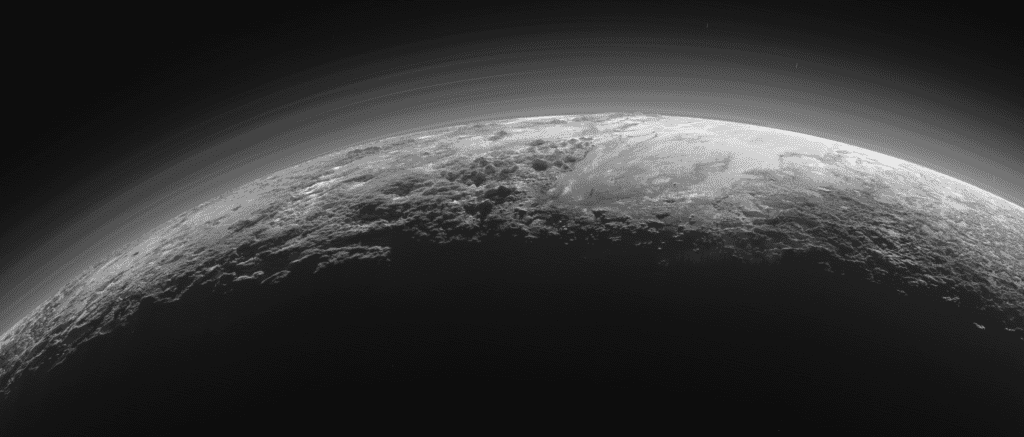
Orbiting the sun over 40 times farther away than the Earth, it’s no wonder that Pluto is so incredibly cold. But when New Horizon made its historic flyby of the dwarf planet, NASA scientists were dumbfounded to find Pluto was even colder than expected — about 30 degrees Celsius (86 degrees Fahrenheit) colder. A new hypothesis suggests that a haze of solid hydrocarbons might be regulating Pluto’s temperature. If this hypothesis is confirmed, it would signify a new regime of planetary climate; something that’s never been witnessed before.
Pluto might not be a planet but at least it’s still cool
Researchers at the University of California, Santa Cruz, led by planetary scientist Xi Zhang, believe they’ve found the culprit for Pluto’s anonymously cold atmosphere. The New Horizons spacecraft revealed that the dwarf planet is surrounded by 20 or so layers of haze arranged like the skin of an onion. The haze is made of soot-like solid particles.
Scientists had known for decades that Pluto has an atmosphere and that it might be hazy, but it wasn’t until recently that they began to comprehend this stunningly complex atmospheric mechanism.
Zhang and colleagues devised a mathematical model that investigated whether or not the nanoparticles could be influencing Pluto’s atmospheric temperature. Indeed they can, the model suggested, whose results were almost a perfect match with New Horizon’s empirical observations.
The particles are no bigger than 150 nanometers in diameter and are thought to consist of hydrogen cyanide, acetylene, and other organic compounds, similar to the ones found around Saturn’s moon Titan. These particles might have a significant cooling effect on Pluto by absorbing infrared radiation, thereby reducing atmospheric temperature.
“Basically, we needed a strong coolant to explain why Pluto is so cold,” Zhang told New Scientist. “We found that the abundant haze particles can strongly cool the atmosphere by re-emitting infrared radiation to space, a process not considered in previous theories.”
“In the infrared range of radiation, a slightly larger amount of energy is radiated back to space by the haze particles, cooling the atmosphere overall,” he added.
From six billion miles away, Earth-based detectors aren’t sensitive enough to identify Pluto’s near-infrared radiation, which could be one of the reasons why the haze wasn’t discovered sooner. Fortunately, the James Webb Space Telescope, which is scheduled to launch in 2019, will be equipped with the proper tools to investigate Pluto’s infrared radiation.
If the researchers’ hypothesis holds water, this would make Pluto the only solar system planetary body whose temperature isn’t principally controlled by gases.
Scientific reference: X Zhang, D F Strobel and H Imanaka, Nature, 2017, DOI: 10.1038/nature24465.


